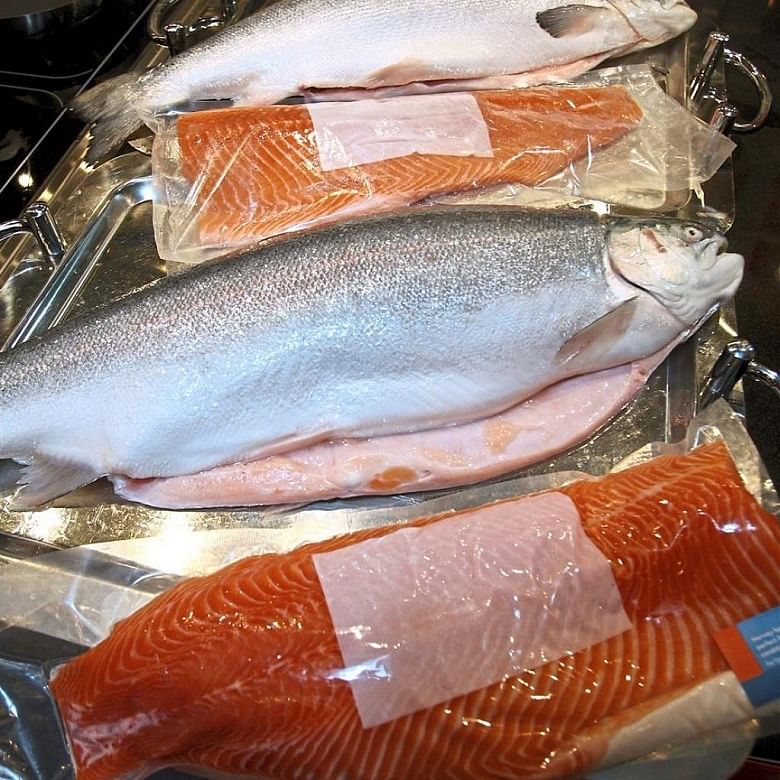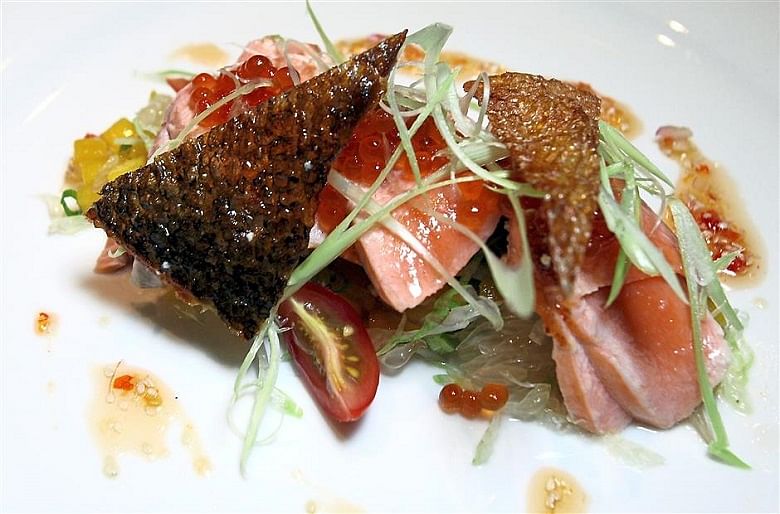The difference between Norwegian trout and salmon
Sign up now: Weekly recommendations for the best eats in town
Follow topic:
(THE STAR/ASIA NEWS NETWORK) - Given the coastal lines that border the country, it is not surprising to learn that Malaysia has the highest seafood consumption per capita in South-East Asia.
Based on data from WWF-Malaysia, it seems it consumes an average of 1.4 billion kilograms of seafood annually.
According to the Norwegian Seafood Council (which promotes and disseminates information about Norwegian seafood), while the local palate still gravitates towards home-grown fish such as kembong (mackerel) and keli (catfish), there is an increasing proclivity for imported fish such as salmon and trout, especially among middle- and high-income urbanites.
"We see this particularly in urban areas where consumers are becoming more international and want to try new foods. They want to eat healthy, trendy foods and they also want convenience, so salmon and trout fit into that picture very well," says Mr Jon Erik Steenslid, director of the Norwegian Seafood Council for South-East Asia, at a recent event highlighting Norwegian fjord trout.
Norway is the second largest seafood exporter in the world (2.6 million tonnes exported in 2017 alone) and the world's largest producer of farmed Atlantic salmon and fjord trout.
According to Mr Steenslid, in the Malaysian market, salmon was traditionally the fish du jour for affluent urbanites, but trout is now gaining prominence.
But many consumers find it almost impossible to tell the difference between salmon and trout. Both look fairly similar and the problem is compounded by the fact that retailers sometimes mislabel trout as salmon and both fish often receive the dubious misnomer salmon-trout.
In reality, there is no such thing as salmon-trout. Salmon is salmon and trout is trout. But this acute mislabelling has led to a lot of confusion among consumers.
"What we see so far is that there is a kind of a mix-up in the understanding of salmon and trout. Retailers, restaurants and consumers are not sure what the difference is between salmon and trout, so that's why they call it salmon-trout. But it is basically two different types of fish that have a lot of similarities, but also have a lot of differences. So we want to educate the market to be able to distinguish between salmon and trout and to see that they are two different kinds of fish," says Mr Steenslid.
Norwegian Trout vs Salmon
Norwegian fjord trout is farmed in the untainted, ice-cold Norwegian fjords where seawater meets fresh meltwater from the glaciers and snow. In terms of production, trout represents only 5 per cent of the total production of salmon, which is a huge industry in Norway and is farmed along nearly the entire coastline from East Finnmark to Western Norway.

The fjord trout grows to a weight of 2kg to 5kg, a tad smaller than salmon, which tends to weigh between 3kg and 6kg. The skin of the fjord trout is similar to salmon, with a lustrous and silvery colour, although salmon typically has more black spots near its face.
In terms of colour, the fjord trout is a more florid red-orange than paler-skinned salmon. Because colour is a big draw for Malaysians, many consumers actually prefer trout over salmon.
"Malaysian consumers associate the colour of the fish with quality. Fish that is more red is perceived to be better quality than fish that is less red. But that doesn't mean the quality is different - it's just two different types of fish," says Mr Steenslid.
The trout head and salmon head also offer distinguishing features - trout head is rounder while salmon head is sharper.
Trout also has a fatter belly.
In terms of taste, salmon has that characteristic velvety smoothness while trout has a firmer, more voluptuous bite to it. Also, the fjord trout does not have the trademark earthy, muddy notes that mark its sister, the river trout.
Both fish offer plenty of nutritional benefits, like omega-3, which is said to prevent and reduce the development of cardiovascular diseases, and which are important building blocks in the brain. Trout is also rich in vitamin D (helps to strengthen bones), while salmon is loaded with vitamin A (which contributes to good vision and immune response).
Both fish have selenium, an important element in an enzyme that fights harmful chemical processes in the body.

Like salmon, trout can be incorporated into meals in a variety of ways, including pan-frying, grilling and smoking. It can also be eaten raw, as a sashimi dish.
Quality Control
Mr Steenslid says the popularity of both Norwegian salmon and trout has increased manifold between 2013 and now. "It is trendy because of the Japanese culture coming into Malaysia and it is also a convenient product, as you can find good-quality fish in the stores 365 days a year," he says.
The good quality is ensured as Norwegian salmon and trout have to adhere to very strict standards and fish imported from Norway are closely monitored until they reach local shores.
"We have a very efficient logistics system in Norway. We ship out thousands of tonnes of salmon every week to thousands of destinations, both by land and air transportation. The fish are swimming in the sea and delivered to KL in two to three days and we have traceability of the fish and temperature control all the way through, so we know that when the fish arrives in KL, it is in good condition because we have monitored it all the way through," he says.
To ensure that the fish remains in optimal condition in Malaysian supermarkets, Mr Steenslid and his team have embarked on a mission to educate local retailers.
"It is very important that the value chain in Malaysia knows how to handle the fish. We've been doing quite a lot of training here with supermarket chains to educate them on how we produce the fish in Norway and how they should handle it to maintain the quality. We know that the quality of Norwegian salmon and trout is good, but it takes only a few days of poor handling to make something that is very good not very good anymore.
"So, to make sure the end consumers have a good quality product, we try to educate retailers so that we can maintain the quality all the way to the end," he says.

